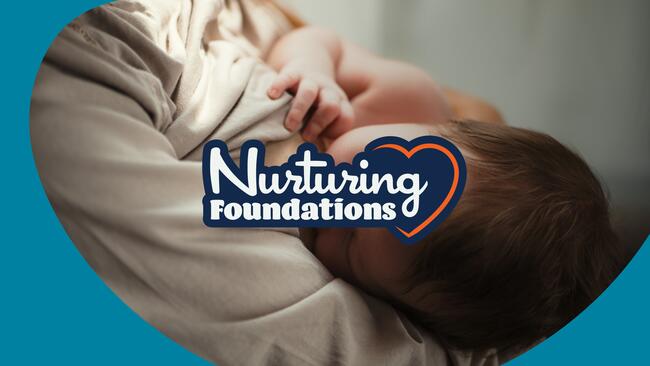During pregnancy, a baby grows significantly each month. The growth of the baby during pregnancy varies month by month.
Understanding the changes and developments at each stage can help expectant parents monitor the baby’s growth and development, and ensure they are on the right track. From the initial stages of conception to the final months of pregnancy, the baby undergoes remarkable growth in size, organs, and overall development.
Each month brings new and unique milestones and changes in the baby’s development, from the formation of vital organs to the ability to hear and respond. It is essential for expectant parents to stay informed about the baby’s growth during each month of pregnancy to ensure the healthy development of their child.

Credit: tesidea.com
Understanding The Stages: A Month-by-month Overview Of Baby’s Growth
Discover the stages of baby growth during each month of pregnancy, gaining insight into the remarkable changes happening within your little one. This month-by-month overview provides a comprehensive understanding of fetal development, allowing you to anticipate and appreciate the progression of your baby’s growth.
During each month of pregnancy, your baby undergoes incredible growth and development. Understanding these stages is crucial for expecting parents to monitor their baby’s progress and prepare for the future. Let’s delve into the month-by-month overview of your baby’s growth.
First Trimester (month 1 To 3)
- Month 1:
- The fertilized egg, or zygote, implants itself into the uterine wall.
- The brain, spinal cord, and heart begin to form.
- Month 2:
- Major organs and body systems start to develop.
- The embryo’s face, eyes, and limb buds become visible.
- Month 3:
- The embryo is now considered a fetus.
- Facial features, bones, and muscles form, and the fetus can move its limbs.
Second Trimester (month 4 To 6)
- Month 4:
- The fetus grows facial features and develops a sucking reflex.
- Organs and tissues continue to mature and develop.
- Month 5:
- The fetus’s senses, including hearing, develop.
- Movements become more pronounced, and the baby can hiccup.
- Month 6:
- The fetus’s skin becomes covered with a waxy coating called vernix.
- It can open and close its eyes and may respond to external sounds with movements.
Third Trimester (month 7 To 9)
- Month 7:
- The baby begins to accumulate fat under its skin.
- It can recognize light and dark, and the lungs continue to mature.
- Month 8:
- Rapid brain development occurs, and the baby may gain half a pound per week.
- The fetus’s bones harden, and it kicks more frequently.
- Month 9:
- The baby assumes a head-down position, preparing for birth.
- Organs and systems continue to mature as the baby grows in size and weight.
Understanding the month-by-month growth stages of your baby will not only help you track their development but also provide a deeper connection with your growing little one.
Nutritional Support For Each Trimester
Throughout each trimester, providing vital nutrition is crucial for baby’s growth during pregnancy. This support should address specific needs, adapting to the changing requirements of each month. Ensuring a balanced and nutrient-rich diet is essential for the healthy development of the baby.
Pregnancy is a crucial time when proper nutrition is essential for the health and growth of the baby. Each trimester requires specific nutrients to support the developing fetus and the changing needs of the mother’s body. Here’s a breakdown of the nutritional support needed for each trimester:
First Trimester
- Folic acid: Essential for neural tube development.
- Iron: Supports the increase in blood volume and formation of the placenta.
- Protein: Crucial for the growth of the baby’s tissues and organs.
- Vitamin C: Aids in the absorption of iron and supports the development of the baby’s bones and teeth.
Second Trimester
- Calcium: Supports the baby’s bone and teeth development.
- Omega-3 fatty acids: Essential for the development of the baby’s brain and vision.
- Vitamin D: Helps the body utilize calcium and supports the baby’s bone development.
- Fiber: Helps alleviate constipation, a common issue during pregnancy.
Third Trimester
- Magnesium: Helps regulate blood sugar levels and supports muscle and nerve function.
- Potassium: Aids in maintaining proper fluid balance in the body and helps prevent muscle cramps.
- Vitamin K: Essential for blood clotting and bone metabolism.
- DHA: Supports the baby’s brain and eye development.
Ensuring a well-balanced diet that includes these essential nutrients throughout each trimester is vital for a healthy pregnancy and the well-being of both mother and baby.
The Importance Of Prenatal Care
Prenatal care is crucial for monitoring the baby’s growth during pregnancy, providing regular check-ups and monitoring from the early weeks up until the delivery. This helps to ensure the baby’s healthy development month by month, offering essential support for both the mother and the baby throughout the pregnancy. Regular prenatal care can detect any issues early, allowing for timely intervention and management.
Prenatal care plays a crucial role in ensuring the health and well-being of both the mother and the developing baby. Here’s why it is essential:
- Early Detection of Health Issues: Regular prenatal check-ups can help identify and address any potential health concerns, such as gestational diabetes or high blood pressure, in the early stages. This early detection can significantly reduce the risk of complications during pregnancy.
- Monitoring Fetal Growth and Development: Through prenatal care, healthcare providers can monitor the growth and development of the fetus, ensuring that the baby is progressing as expected. Any deviations from the normal growth pattern can be identified and addressed promptly.
- Nutritional Guidance: Prenatal care includes valuable guidance on maintaining a healthy diet and taking essential prenatal vitamins. Proper nutrition is vital for the optimal growth and development of the baby.
- Management of Discomfort: Expectant mothers often experience discomforts such as nausea, back pain, and fatigue during pregnancy. Prenatal care provides opportunities to discuss these issues and receive guidance on managing the associated discomforts.
- Preparation for Labor and Delivery: Prenatal visits offer the chance to discuss the stages of labor, birthing options, and pain management strategies, thus empowering expectant mothers to make informed decisions about their childbirth experience.
These aspects underscore the significance of consistent prenatal care, which ultimately contributes to a healthier pregnancy and a better outcome for both the mother and the baby.
Bonding With Your Baby: Tips For Connection Throughout Pregnancy
Throughout each month of pregnancy, it’s important to bond with your baby to foster a strong connection. This helps in understanding the growth and development process. Encouraging this bond can positively impact both the mother and the baby.
During your pregnancy, it’s essential to foster a strong connection with your baby, enhancing the bond even before birth. As you progress through each month, there are various ways to establish a deep connection with your growing baby. Here are some effective tips for nurturing the bond with your little one:
- Communicate with your baby: Engage in soothing conversations, read books aloud, or sing to your baby. Your voice can be comforting and familiar to your baby, promoting a sense of security within the womb.
- Gentle touch and massage: Gently caressing your belly or experiencing prenatal massages can create a sensory connection with your baby. Such touch can be soothing and calming for both you and your baby.
- Bonding activities: Participate in activities that involve your baby, such as attending prenatal yoga classes, swimming, or simply spending quiet, reflective moments focusing on your baby’s movements and kicks.
- Involve your partner: Encourage your partner to bond with the baby by talking and singing to your belly, feeling the baby’s movements, and being an active participant in prenatal care.
By nurturing this special bond throughout your pregnancy, you are laying a strong foundation for a loving relationship with your baby after birth.
Preparing The Nursery: Month-by-month Planning And Nesting
Expecting a baby is an exciting time, and preparing the nursery is an important part of the journey. Throughout each month of pregnancy, nesting instincts kick in as the focus shifts to getting everything ready for the new arrival. From setting up the crib to choosing the perfect color scheme, each month brings new opportunities to create a nurturing environment for your growing baby.
Each month of pregnancy brings exciting opportunities for preparing the nursery. As the due date draws closer, nesting instincts kick in, and it’s time to get the nursery ready. Here’s a monthly breakdown of how to plan and prepare your little one’s safe haven:
First Trimester (months 1-3)
- Design the nursery layout and choose a theme that aligns with your vision for the space. Consider incorporating calming colors and practical storage solutions.
- Start researching and creating a registry for essential baby items such as a crib, changing table, and baby monitor. Begin shopping for nursery furniture and decorations during this time to allow for plenty of lead time for shipping.
Second Trimester (months 4-6)
- Create a list of necessary items and prioritize purchases, including diapers, wipes, and baby clothes. Look for sales and discounts on baby essentials to maximize your budget.
- Focus on the practical aspects of the nursery, such as installing safety gates and childproofing the room. Research and select a pediatrician for your baby and consider options for childcare.
Third Trimester (months 7-9)
- Assemble the crib, changing table, and other furniture pieces in the nursery, ensuring that they are secure and meet safety standards. Wash and organize baby clothes and bedding ahead of time.
- Set up a feeding and changing station in the nursery, complete with necessities like diapers, wipes, and burp cloths. Stock up on essentials to avoid last-minute rushes to the store after the baby arrives.
By following a month-by-month planning approach, you can create a nurturing and functional environment for your new arrival. Last-minute preparation can add unnecessary stress, so staying organized and taking gradual steps will help ease the process and allow you to enjoy the nesting journey.
Educational Resources For Expecting Parents
Expecting parents can access educational resources on baby growth during pregnancy month by month. These materials provide detailed insights into fetal development, helping parents understand each stage of their baby’s growth. Access to comprehensive information and guidance can empower expecting parents to make informed decisions and ensure the healthy development of their baby.
Parenting during pregnancy can be demanding, especially for first-time parents. Fortunately, there are numerous educational resources available to support expecting parents on their journey. Whether you prefer reading books, attending classes, or accessing online resources, the following options can provide valuable information to help you navigate pregnancy and early parenthood:
- Prenatal Classes: Attending prenatal classes at your local hospital or birthing center can provide valuable information about pregnancy, labor, and childbirth. These classes are often led by healthcare professionals, providing an opportunity to ask questions and connect with other expecting parents.
- Online Forums and Support Groups: Joining online communities and forums dedicated to pregnancy and childbirth can offer a sense of camaraderie and support. Engaging with individuals who are going through similar experiences can be reassuring and informative.
- Pregnancy Books and Publications: There are a plethora of well-researched and comprehensive books available that delve into various aspects of pregnancy and childbirth. These resources can provide in-depth knowledge, practical advice, and tips for navigating pregnancy and the early stages of parenthood.
- Web-Based Educational Platforms: Several websites and online platforms offer a wide range of resources, including articles, videos, and interactive tools designed to educate expecting parents. These platforms cover topics such as prenatal care, nutrition, exercise, and preparing for childbirth.
- Mobile Applications: There is a growing number of mobile apps tailored to pregnancy and parenthood, providing daily tips, personalized insights, and tools for tracking pregnancy milestones and fetal development.
Accessing these resources can empower expecting parents to make informed decisions regarding their health, childbirth, and early parenting. These educational materials can also help reduce anxiety, build confidence, and create a sense of community during this transformative period.
Celebrating Milestones: Capturing And Remembering Each Stage
As your pregnancy progresses, it’s exciting to capture each stage of your baby’s growth from month to month. Celebrate the milestones and remember this special time by documenting the changes that occur during each phase of pregnancy. Whether it’s taking photos, keeping a journal, or creating a pregnancy milestone chart, cherishing these moments is a beautiful way to embrace the journey towards motherhood.
Becoming a parent is a remarkable journey, filled with unforgettable moments as you witness your baby’s growth during pregnancy month by month. Here’s how to capture and remember each stage:
Consider A Pregnancy Journal
- Keeping a pregnancy journal allows you to document your thoughts, feelings, and experiences throughout each stage of your pregnancy.
- Capture special moments and milestones, like the first time you felt your baby kick or your thoughts and emotions as you prepare for parenthood.
Create A Pregnancy Photo Album
- As your pregnancy progresses, take regular photos of your growing belly to document the physical changes.
- Consider professional maternity photo shoots to capture the beauty and joy of this special time in your life.
Organize A Baby Shower
- Celebrate the impending arrival of your little one with a baby shower, where loved ones can share in the joy and anticipation.
- Use the event as an opportunity to create lasting memories by taking photos and saving mementos from the occasion.
Commemorate Each Milestone
- As you reach each pregnancy milestone, find unique ways to commemorate and celebrate the occasion.
- Whether it’s the first ultrasound, hearing your baby’s heartbeat, or feeling those initial flutters, each milestone is meaningful and worthy of celebration.
Pregnancy Baby Growth Chart
Track your baby’s growth during each month of pregnancy with a Pregnancy Baby Growth Chart. From the early stages to the final trimester, monitor the development of your little one with this helpful tool. Stay informed about your baby’s progress and celebrate every milestone.
A pregnancy baby growth chart is a valuable tool that gives you detailed insights into your baby’s development month by month during pregnancy.
- The First Trimester (Month 1 to 3): During the first trimester, your baby’s major organs start to form, and the heart begins to beat. By the end of the third month, the baby’s facial features, limbs, and vital organs are well developed.
- The Second Trimester (Month 4 to 6): In the second trimester, your baby’s growth accelerates. By the end of the sixth month, the baby’s skin becomes less transparent, and their bones are fully developed. Additionally, the baby starts to develop their sense organs, such as vision, hearing, and taste.
- The Third Trimester (Month 7 to 9): The final trimester is marked by rapid weight gain and further development of the baby’s organs. By the end of the ninth month, the baby can recognize voices, respond to light, and is ready for life outside the womb.
Understanding your baby’s growth during pregnancy can provide reassurance and help you track your baby’s progress as it prepares for birth.
Food For Baby Growth During Pregnancy
Ensure healthy baby growth during pregnancy with nutritious food. Starting from the first month and continuing each month, focus on a diet rich in protein, calcium, vitamins, and minerals such as folate, iron, and Omega-3 fatty acids. Incorporate a variety of fruits, vegetables, lean proteins, and whole grains for optimal development.
In order to support the healthy development of the baby during pregnancy, the mother’s diet plays a crucial role. Here are some essential nutrients and foods that can facilitate optimal baby growth during each month of pregnancy.
First Trimester (months 1-3):
- Folic acid-rich foods: Leafy greens, lentils, citrus fruits, and fortified cereals can aid in proper neural tube development.
- Lean proteins: Including poultry, fish, eggs, and legumes can provide essential amino acids required for the baby’s growth and organ formation.
Second Trimester (months 4-6):
- Calcium-rich foods: Incorporate dairy products, dark leafy greens, and fortified plant-based milk to support the baby’s bone and teeth development.
- Iron-rich foods: Red meat, poultry, lentils, and spinach can help in preventing anemia and support the baby’s red blood cell production.
Third Trimester (months 7-9):
- Omega-3 fatty acids: Consuming fatty fish, chia seeds, and walnuts can aid in the baby’s brain development and overall growth.
- Vitamin C-rich foods: Citrus fruits, bell peppers, and strawberries can assist in the absorption of iron and support the immune system of both the mother and baby.
Remember, maintaining a balanced diet with a variety of nutrient-rich foods is essential for ensuring the healthy growth and development of the baby throughout pregnancy.
Frequently Asked Questions Of Baby Growth During Pregnancy Month By Month
What Are The Key Stages Of Baby Growth During Pregnancy?
The key stages of baby growth during pregnancy include the embryonic and fetal periods, each with distinct developmental milestones. It’s a fascinating journey as the baby’s organs form and their senses start to develop. Understanding these stages can help parents connect with their baby’s progress.
How Does Nutrition Impact Baby Growth Month By Month?
Nutrition plays a crucial role in supporting baby growth during pregnancy. As each month brings new developments, the nutritional needs change too. From essential vitamins and minerals to a balanced diet, providing the right nutrients is vital for the baby’s healthy growth and development.
What Factors Can Affect Baby’s Growth During Pregnancy?
Several factors can influence a baby’s growth during pregnancy, including the mother’s health, genetic predispositions, and overall lifestyle choices. It’s essential to be aware of these influences and take necessary steps to optimize the environment for the baby’s growth and well-being.
Conclusion
Understanding the monthly changes in your baby’s growth during pregnancy is essential for expectant parents. By keeping track of the intricate developments, you can ensure a healthy journey for you and your little one. With the right knowledge and support, you can prepare for the miraculous journey of welcoming your new arrival.








